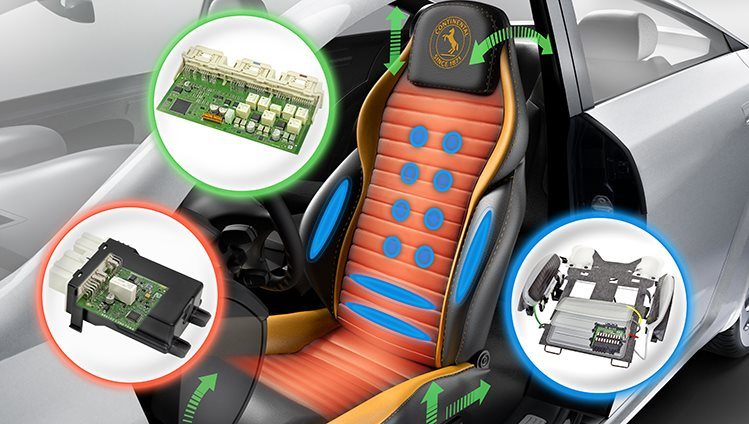Innovation in automotive over the course of almost 150 years has been phenomenal. Cars have become safer, speedier and more comfortable.
However, there is one very important part of the car where the evolution has not been very gradual but off late, it is getting all the attention it deserved.
Yes, we are talking about the seats! During the first phase of the evolution of the cars, emphasis was more on the engine, powertrain, and chassis. Simultaneously, electronics was also being introduced in the cars to make the control units and systems more fail-proof and intelligent.
However, the automotive OEMs in collaboration with tier-1 suppliers of automotive components also have been gradually investing in the car seating control systems in order to deliver a value-add driving experience to their customers
In-fact, gradually the automotive Seating solutions are being perceived as one of the important brand differentiators.

Source: Continental Automotive
The Striking New Changes in Car’s Seating Systems
- Customizable Multi-way Adjustable Seats: Gone are the days when the seats could only be adjusted in 2 ways and that too manually with a lever. The new multi-way adjustable automotive seating solution are operated by buttons that can adjust the seats just the way you like. Ford Motor Company’s Lincoln Continental has a 30-way adjustable seat without making the seat any bigger than the usual ones.
- Stress & Fatigue Detecting Seats: There are automotive seating solution in making that measure heart rate and other metrics to deduce the stress and fatigue level of the driver and adjust the seat accordingly to enhance the driver’s alertness. Stress-relieving massage can be offered to the driver if he or she is feeling stressed. It is up to the passenger to accept the massage or decline it.
- Smartphone Connected Seats: The list of components that you can connect your smartphone with, has a new addition. There are automotive seating solutions in the market that feature Bluetooth connectivity and make it possible to connect them with your smartphone. The passenger can then adjust the lumbar support, thigh and back bolsters, neck support etc. with the help of an app.
- Customized Massage: In order to convert the seats to a ‘seating experience’, the seating control needs to be smart enough to cater to the users in a way they would like the most. Advance seats now come with customized massage pattern selector.
- Memory Seats: It’s all about offering personalization to the end-users and why should the seating solutions be any different!. Memory seating solution is the perfect example of such personalization. These automotive seating system remember the settings for a particular user and implements it upon the users’ request. These settings are stored in the memory of the ECU responsible for controlling the seats.
For instance, if the seat occupant wants a mild massage only at the lumbar region of the back, there is an option for it. Likewise, an end-user can opt for other such massage patterns. An end-user also has the option to choose the intensity of the massage.
Embedded software companies have designed such products that can be directly fitted into the seating system of the car.
Role of Electronic Control Unit (ECU) & Embedded Software
Whenever we talk about any kind of automation in a vehicle, there has to be Electronic Control Units (ECUs) solution that drives the automation.
These small embedded computers enable the communication between different components of the car using the vehicle’s bus network (CAN, LIN etc.)
In the seating control solution as well, the automotive ECUs have a major role to play. They are responsible for taking the input from the user and transfer the signal first to the car battery and then to the target component.
A specialized ECU called body control module is responsible for activating any kind of mechanical action that need to be performed to control any component of the seating system.
These automotive ECUs interact with each other using automotive communication and diagnostics protocols (J1939, OBD2, UDS, KWP 2000 and more) that are integrated with the automotive ECU solutions. These software stacks are based on ISO standards and therefore, bring in the compatibility between automotive ECUs from different suppliers.
What’s the Future Like for Seating Control Systems?
The future of the seating solutions in cars will be personal rather than generic. With Artificial Intelligence teaming up with electronics, the seating control solutions will be designed to be smart enough to recognize the person sitting in the car and adjust to his or her preferences.
We can expect to witness even more futuristic car seating systems in the coming years as extensive research is already on in this field.


